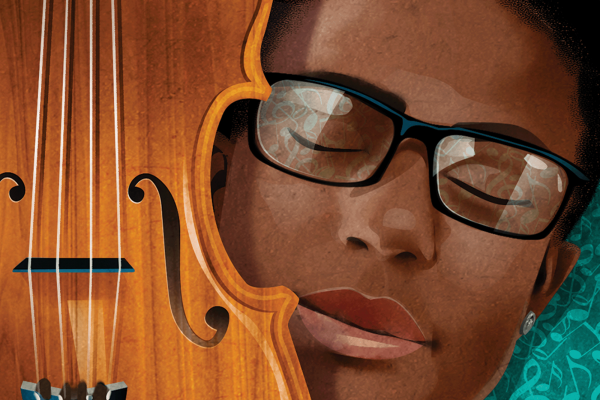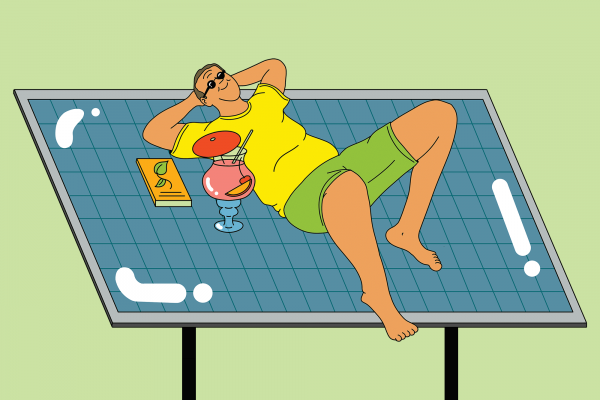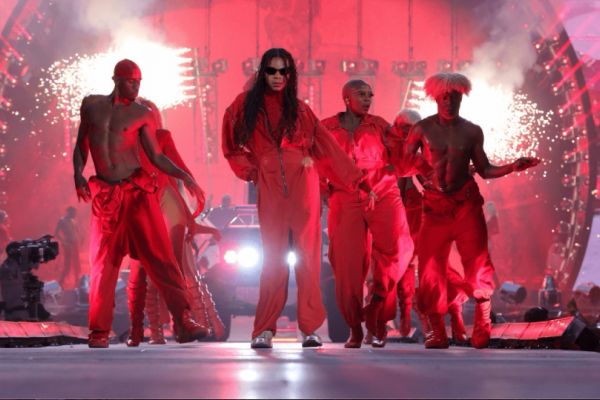To get to Iona, the Scottish island that hosts a contemplative-activist community in an abbey that has existed for over a thousand years, you first have to go through Oban, a gorgeous coastal town of narrow streets and travelers’ rests. And if you spend the night in Oban, likely as not, you’ll end up in a fish and chip shop. And if you go to the same fish and chip shop in which I bought a pastie supper a few years ago, you might meet the same guy I did. The guy who, between dipping cod in milky batter and chips in the hottest oil, overheard the conversation I was having with my husband Brian, about international cinema and the way movies can elevate or diminish our sense of what’s possible. It’s a long way from battered cod in Oban to international cinema and the way movies can elevate or diminish our sense of what’s possible, or so I thought. But the fish and chip guy declared his own interest, and authenticated it with a sentence that I imagine I’ll never forget.
“Claire Denis,” he said, naming a French director best known for the way her films evoke feeling, shape, and sound as much as story or ideas. “Claire Denis — did you ever see her film Beau Travail?” The mention of Denis’ masterpiece that uses the rituals and culture of the French Foreign Legion as a lens for wondering about men is a surprise in most contexts. This was likely the first time it had been discussed in an Oban fish and chip shop. But I digress. “Aye, Beau Travail — it’s great. It’s like masculine and feminine.”
And there you have it — as perfect a description of what the movies can do: open us to empathy for someone, something, somewhere we haven’t been before. It’s like masculine and feminine, and that’s what Claire Denis likes to emphasize: the intersections and contrasts and overlaps and shades of things, rather than their borders and distinctions. If I told you that her new film High Life is about a spaceship prison, where death row inmates are sent to explore the possibility of harnessing black hole energy to power industry on earth, you might think of a epic science fiction adventure, and you might also think you had seen the movie before. (Danny Boyle’s Sunshine had a similar plot; the vegetable garden with a hydration system is right out of the eco-conscious Silent Running; notions of love and death in outer space undergird 2001: A Space Odyssey, Solaris, and Interstellar.)
High Life reminds me of all those films, but it brings its own bleakness, and one new(ish) idea: that the protagonist, played by Robert Pattinson, is raising a daughter, called Willow, born during the mission. (The process by which she comes into existence is very troubling, and the great Juliette Binoche gives more to her role — a doctor with both passion and enormously broken ethics — than perhaps the film deserves.) Willow is, of course, innocent of the crimes that got the rest of the crew into this situation and also of the sin committed by the authorities who sent the prisoners on a mission from which they could not return. (Flashbacks to earth show us that the world is run by a corporation, that the prisoners are expected to die trying, and that in this dystopian future there are still restorative justice and prison reform activists. There is always a remnant!)
Beyond that, High Life is an unusual thing. It’s a film that’s brilliantly put together in terms of its structure, visual, and physical design and the commitment of its actors. It’s also unpleasant to watch, and doesn’t say much about its questions other than representing them. Denis is known to “shoot fast, edit slowly;” the control of images, the representation of space inside and outside the ship, the feeling of isolation and resignation to fate are extraordinary. But most of the characters are so unlikable as to make them almost impossible to identify with, and the story feels like it outlines but never quite gets around to exploring the things it wants to talk about.
However, in that sense, it might be smarter than it looks — the ship can be read as a metaphor, obviously, for prison in the real world, where repetition must at times seem like a death sentence. But you don’t have to be in prison to recognize the power dynamics among the characters and how their bored desperation could remind us of what happens when the most emotionally unhealthy habits of mind mingle with the least human technologies. You don’t have to launch into space to find yourself clicking a button over and over and over, the offer of immediate gratification without genuine connection. It’s no wonder that the most psychologically mature astro-prisoner (played by André Benjamin) takes to sleeping in the garden — it’s the closest thing to real.
High Life really isn’t an easy viewing experience, though for some it will be rewarding. (For a more accessible portrayal of similar questions, about isolation, making amends, and the possibility of making a life, even when the walls are caving in, try the thoughtful prison drama The Mustang.) I’m not sure that High Life really cares about people, or prison; or perhaps it just does such a good job of portraying its very depressed characters that some of it spilled over onto me. I was left with the feeling that when people are only offered surfaces to look at, and only invited to ask what we can access for our selves; when we don’t take responsibility for our mistakes and develop the capacity to show mercy to each other; when we use power without having developed the kind of ego core that seeks to serve the common good without worrying too much about its reputation, our life can be like High Life, in danger of becoming merely unhappy people floating in space, not getting to know each other.
Got something to say about what you're reading? We value your feedback!







